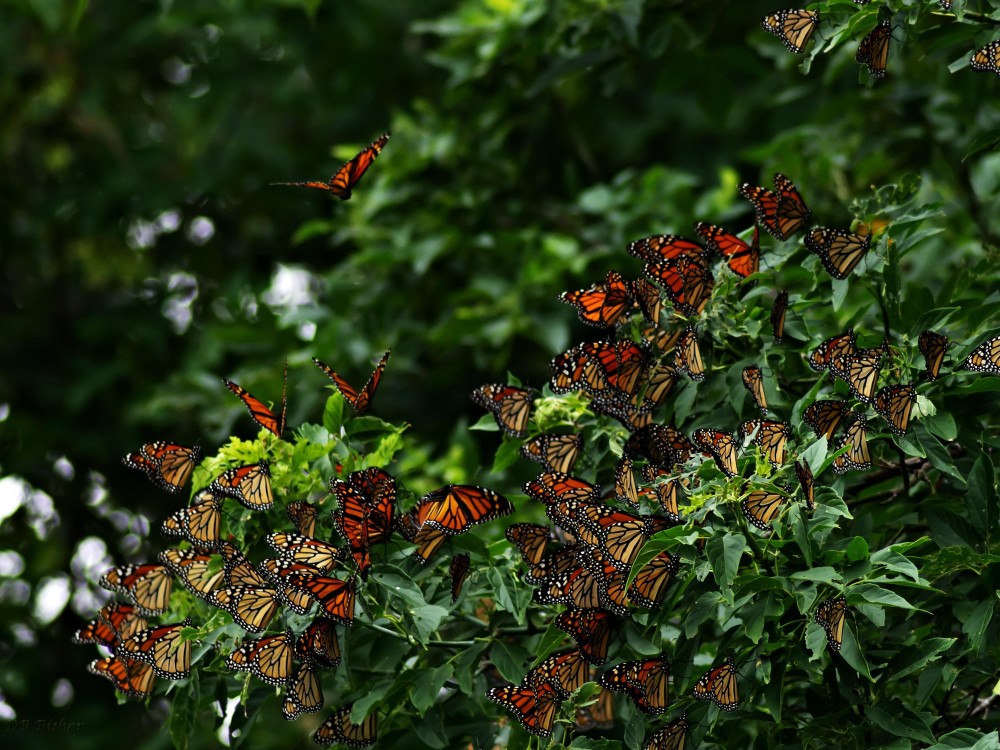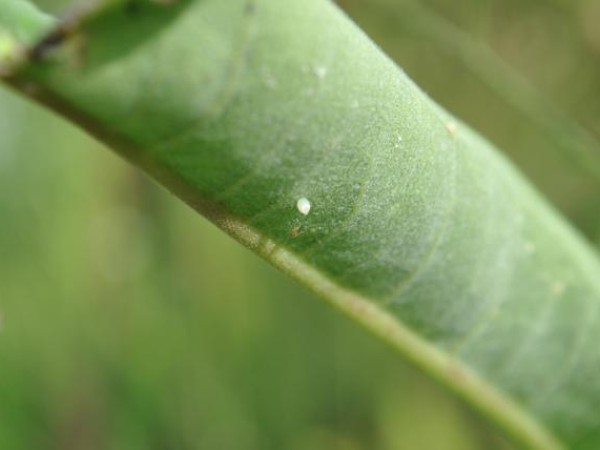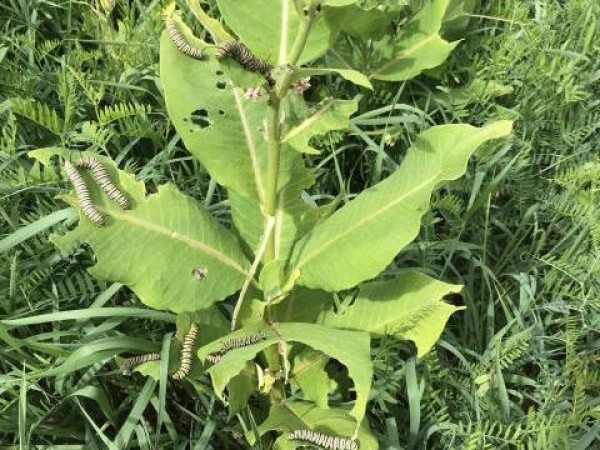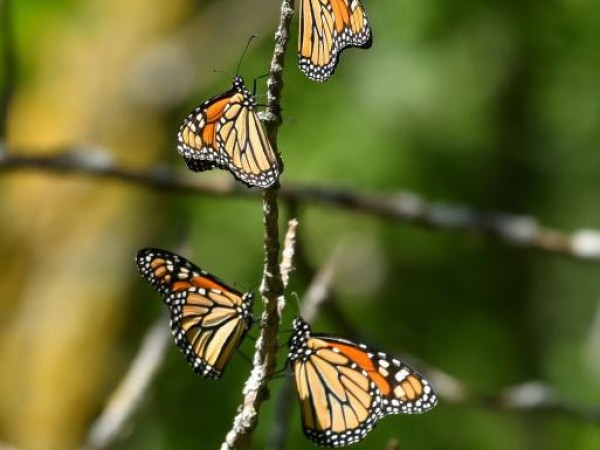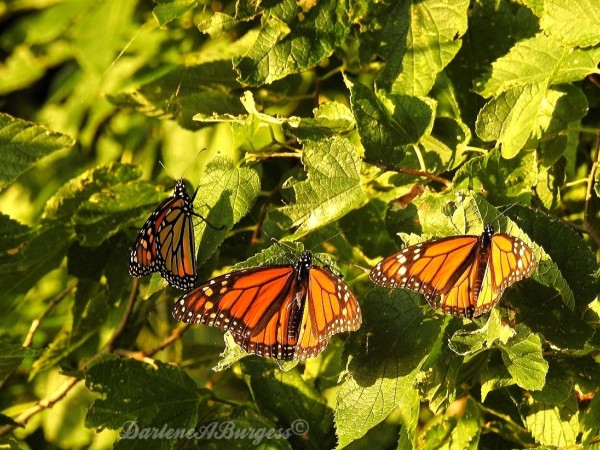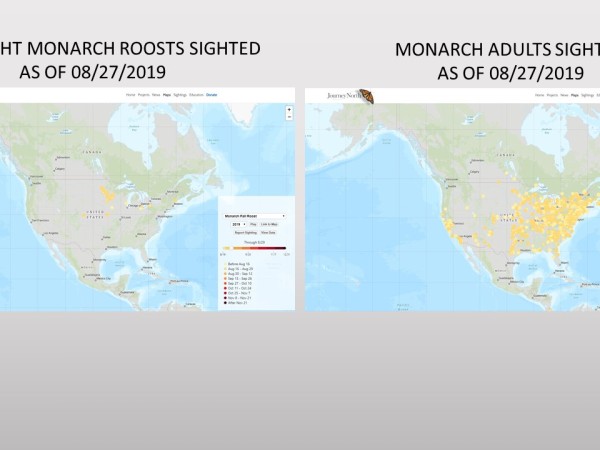Monarchs on the Move
Egg Laying Still Happening
Journey North citizen scientists continue to report monarch eggs, caterpillars and adults in large numbers.
From Portsmouth, NH: Helene commented that a "Monarch was busy laying eggs, could not count them all." (08/22/2019)
From Mechanicsburg, PA: Barbara "found 12 eggs on my milkweed today." (08/25/2019)
From Randolph Center, VT: John rescued over 1500 monarch larvae from a field about to be hayed, AND convinced the farmer to postpone mowing for now, saving countless monarchs. (08/25/19)
Migration Starting to Build
From Olivia, MN: Lynn "noticed directional flight last night. Today at least 4 dozen monarchs nectaring on my flowers. Small clusters of 8 or 10 in several trees!" (08/27/2019)
Roosts Reveal Pace and Pathways
More roosts -- about 47 to-date -- have been observed by Journey North citizen scientists. Many of these roosts have been sighted in the Upper Midwest of the United States and along Lake Heron and Lake Erie.
From Campbell, MN: Wayne commented that he "has been back every day since 8/21 to check the roosts. I can't begin to count them." (08/18/2019)
From Point Pelee National Park, ON: Darleen reported "Most of the way down west path monarchs were observed flitting about and establishing roost spots on tree branches cascading over the path." (08/23/2019)
Monarchs rest at overnight roosts at the end of each migration day. Look at the roost map and notice where roosting occurred in August. Roosts show us where large concentrations of migrating monarchs are found. Week by week, the map will reveal the main migration pathways to Mexico and the pace of the migration. The pace and pathways are impossible to discern from our "All Sightings" map as you can see when you compare maps. Much mystery surrounds this behavior. Roosts are difficult to study. They don’t last long and they can’t be found dependably in the same places every year.
Roost Reporting
When submitting roost data to Journey North, please include the following information if possible:
-
Time of day you first saw the roost
-
Date the roost first formed
-
Nectar sources nearby like clover, alfalfa fields or wildflowers
-
Overnight temperatures
-
Wind direction. Were the monarchs shielded from the wind in this location?
-
Photos
- How you counted or estimated the number of adults roosting
Thank you for your contribution to our collective understanding of monarch migration.
